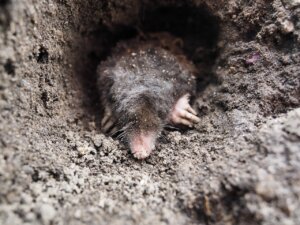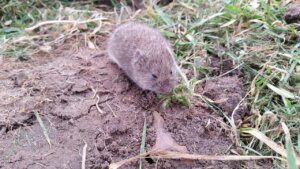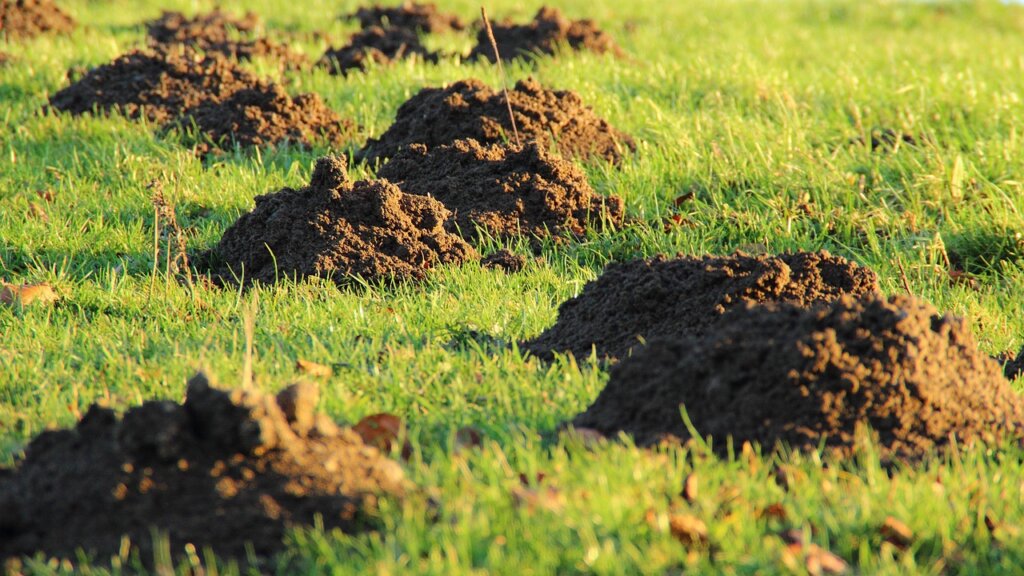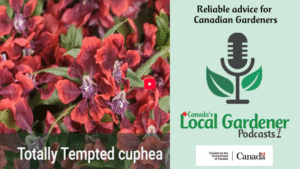Critters in the Garden: Voles & moles
Although voles and moles are different, the deterrents are similar. Moles tunnel under the ground and make runways just below the surface. This creates ridges in your lawn. At the end of these feeding tunnels you will find little volcanoes of soil. This is how you know the problem is moles.
Voles live on the surface of your lawn, under the roots and debris – if you have a thick thatch buildup you are at risk of attracting voles. They mainly eat the stems and leaves of grass and leave your lawn a mess. They will also gnaw on bulbs and the base of shrubs and trees. They can burrow in the root system of a shrub or a tree, causing it to lean or even die back. They also enjoy a thick cover of mulch, so if using this, keep it away from the stems of your shrubs.

There are several methods that can help control both moles and voles simultaneously:
- Trapping:
Traps: Use traps designed for small mammals. Place them in active runways and burrow entrances.
For moles, use mole-specific traps like scissor traps or harpoon traps. Find mole traps here.
For voles, use mouse traps baited with peanut butter or apple slices. Great vole traps.
- Repellents:
Castor Oil-Based Repellents: Both moles and voles dislike castor oil. Apply granular or liquid repellents to your lawn and garden to create an unpleasant environment for these pests. Plantskydd is also said to prevent their incursion into your property.
- Physical Barriers:
Hardware Cloth: Install hardware cloth or metal mesh around garden beds and the bases of trees and shrubs. Bury the barrier at least 12 inches underground and extend it 12 inches above ground.
- Habitat Modification:
Remove Vegetation: Keep your lawn well-mowed and clear out dense vegetation, mulch, and ground cover where moles and voles can hide and nest.
Proper Irrigation: Avoid overwatering, as moist soil attracts both moles and voles by making it easier for them to dig.

- Natural Predators:
Encourage Predators: Attract natural predators like owls, hawks, and snakes to your yard. Installing owl boxes and perches can help. But if you have pets or kids at home, probably it’s not a good idea.
- Reduce Food Sources:
Grub Control: Since moles feed on grubs and insects, applying nematodes or grub control products can reduce their food supply. While this won’t directly impact voles, it can make your yard less attractive to moles, which in turn can reduce vole activity as well.
Combining these methods can be effective in controlling both moles and voles. But if the infestation persists, and you can’t prevent them from visiting, with poison baits or trapping, you should consider having a professional help you out.













